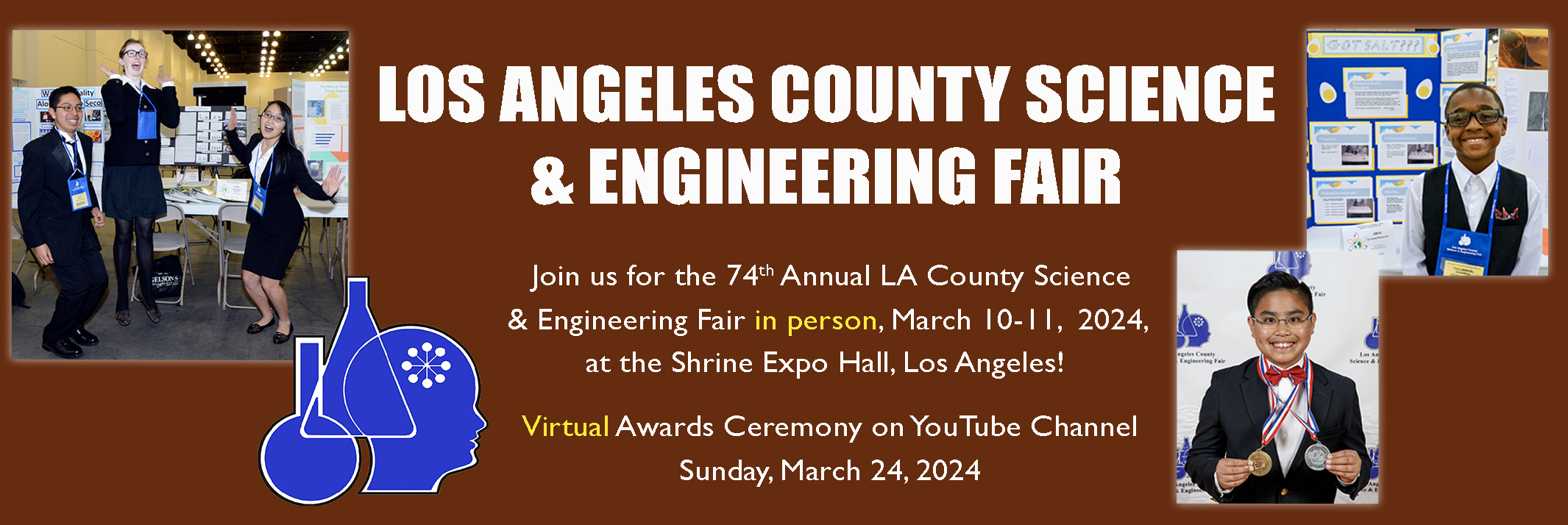DEFINITION: research that involves the use of hazardous materials, devices and activities (Includes DEA-controlled substances, prescription drugs, alcohol & tobacco, firearms and explosives, radiation, lasers, etc.). Rules for Hazardous Materials include substances and devices that are regulated by local, state, country, or international law, most often with restrictions of their use by minors such as DEA-controlled substances, prescription drugs, alcohol and tobacco and firearms and explosives. Hazardous activities are those that involve a level of risk above and beyond that encountered in the student’s everyday life.
ALL projects involving research with hazardous materials must be pre-approved by the LA County Science Review Committee (SRC) before experimentation is begun, with the following exceptions:
- model rocket experimentation using a fully assembled rocket motor, reload kit or propellant modules,
- commonly used laboratory devices, assuming that the student researcher has experience working with them, such as Bunsen burners, hot plates, scales, saws, drills, hammers, etc. with oversight by an adult.
- using dry ice when proper safety gear is worn and there is adult supervision
Before beginning research involving hazardous materials, activities or devices, be sure to check with your school or District fair as more strict rules and guidelines may be in effect.
Prohibited Research
Extremely Hazardous Chemicals (OSHA)
Prescription Drugs
Firearms and Explosives –including airsoft guns, paintball guns, B.B. guns, pellet guns, air rifles, Education Code 48900(b) Creating explosions or setting items on fire is strictly prohibited. M‑80’s and Cherry Bombs are explosives. Exceptions to this exclusion is the use of a fully assembled rocket motor, use of reload kit or propellant modules; and burning food with a calorimeter.
Supervision Regulations
- The student researcher must conduct a risk assessment in collaboration with a Designated Supervisor or Qualified Scientist prior to experimentation.
- The use of hazardous materials and devices and involvement in hazardous activities require direct supervision.
- All studies using DEA Schedule 1 substances must have the research protocol approved by DEA before research begins
- For all chemicals, devices or activities requiring a Federal and/or State Permit, the student/supervisor will be expected to have the permit prior to the onset of experimentation.
Safety Precautions
The student researcher must design experiments to minimize the impact that an experiment has on the environment, for instance using minimal quantities of chemicals that must subsequently be disposed of in an environmentally safe manner in accordance with good laboratory practices. The Science Safety Handbook for CA Public Schools (2014) describes general lab safety precautions (page 26–31).
- Always handle dry ice with insulated gloves and wear eye protection.
- Burning solid substances (such with a calorimeter) must be performed under a fume hood or outside the classroom.
Poisonous Plants
This section of the Science Safety Handbook describes the effects of poisonous plants (15-page PDF). The complete Safety Handbook can be viewed/downloaded here.
Soil samples from known or suspected contaminated areas require pre-approval for hazardous materials.
Waste Disposal
Experimentation must include proper disposal methods for the chemicals/materials used in an experiment.
Radiation
A risk assessment must be conducted when a student uses non-ionizing radiation beyond that normally encountered in everyday life. You should never look directly into a laser or a laser reflection thinking it is safe. Follow standard laser safety protocols to avoid laser exposure to bystanders. THIS YEAR, ALL PROJECTS INVOLVING LASERS REQUIRE PRE-APPROVAL FROM THE SRC.
Projects involving radionuclides (radioisotopes) and X‑rays must involve a careful examination of the risks associated with the study.
Please see the Hazardous Materials and Procedures Webinar for more information regarding projects involving Hazardous Materials and Procedures.
Below are the resources needed for Research involving Hazardous Materials and Procedures:
Hazardous Materials Online Pre-Approval template (This is a fillable PDF. Please download this document to your device and enter your responses in the given boxes. You do not need to complete the form in one sitting. Choose Save to save your progress. Once you complete the form, get it approved by your adult supervisor and site coordinator BEFORE you go online to complete the online pre-approval form. You can then copy and paste your responses in the appropriate sections of the online form.)
In addition, Senior Division students need to complete the ISEF Human Informed Consent form and bring them to the fair.
